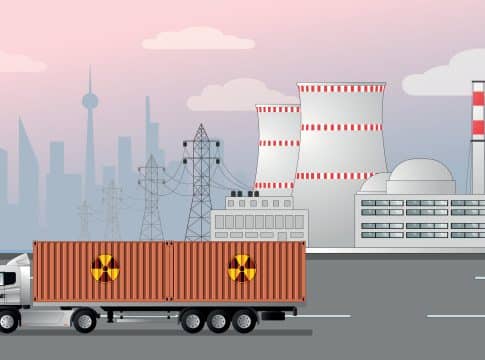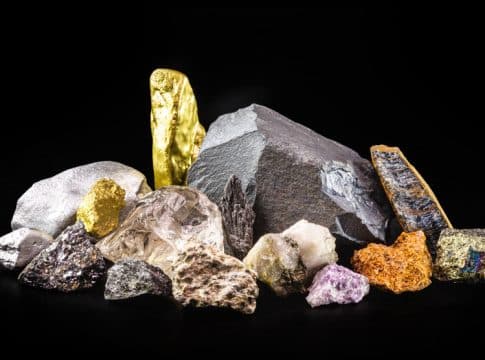Supreme Court to Rule on Nuclear Waste Storage in Texas: Could Carbon-Free Energy Hang in the Balance?
The U.S. Supreme Court has agreed to review a case concerning a proposed nuclear waste storage facility in Texas. The project was meant to be a temporary site for storing spent nuclear fuel, but Texas state officials, along with landowners and energy groups, opposed it. They argued that the U.S. Nuclear Regulatory Commission (NRC) didn’t have the authority to approve such a facility away from nuclear reactors. The Fifth Circuit Court agreed and blocked the project.
Now, the Supreme Court is being asked to weigh in on two key issues:
Can third parties challenge an agency’s decision when they believe it oversteps its authority?
Does the NRC have the legal power to approve private companies to store nuclear waste far from the reactors where it was generated?
In a nutshell, here are the second-order effects of the Supreme Court’s final decision:
Nuclear Waste Management Stalemate: If the Supreme Court upholds the lower court’s ruling, it could delay or complicate efforts to find new storage sites for nuclear waste, a longstanding problem for the U.S.
Energy Sector Impact: Delays in resolving nuclear waste storage could discourage further investments in nuclear energy, just as demand for clean energy is growing. Nuclear power is seen as a critical part of reducing carbon emissions. Thus, this legal battle may slow the nuclear industry’s growth.
Shift in Federal Policy: A decision against the NRC could push the government to revamp nuclear waste policies and create new legal frameworks to address the issue. The fight over where to put this waste could escalate, particularly in Western states like Nevada, where past efforts were blocked.
Waste Not, Want Not: How Delays Can Hurt U.S. Nuclear Energy
If the Supreme Court sides with the NRC, it could pave the way for more interim storage sites. This could offer a temporary fix to the nation’s nuclear waste problem. However, the challenge of finding a permanent solution would remain.
This case is significant for the future of U.S. nuclear energy. This particularly applies to how the country manages nuclear waste—a longstanding challenge in the nuclear industry.
SEE MORE: What Does the U.S. Need to Triple Its Nuclear Capacity by 2050? DOE Explains…
The U.S. produces around 2,000 metric tons of spent nuclear fuel annually. Despite this, the total volume is small—less than half an Olympic pool. Since the 1950s, the spent fuel could fit on a single football field stacked less than 10 yards high. The energy produced from this fuel powers over 70 million homes, avoiding 400 million metric tons of CO2 emissions.
Spent nuclear fuel is stored at over 70 sites in 35 U.S. states. A quarter of these sites no longer have operational reactors. The Department of Energy is considering consolidating the fuel at interim storage facilities.
The Supreme Court’s decision to review the cancellation of a permit for a temporary nuclear waste storage site in Texas could have major implications for the U.S. nuclear program.
The Growing Problem of Spent Fuel Storage
The U.S. relies on nuclear power for about 20% of its electricity. As the country pushes for clean energy and net-zero emissions goals, nuclear energy is becoming more critical due to its low-carbon emissions.
However, one of the biggest unresolved issues is the storage of spent nuclear fuel. Currently, there is no permanent solution in place for long-term nuclear waste disposal. Moreover, many reactors store waste on-site, which is not sustainable long-term.
The U.S. Nuclear Regulatory Commission (NRC) has been trying to establish temporary storage sites to manage this waste. The proposed site in Texas, which this case revolves around, was meant to be a step toward addressing the nuclear waste problem, especially as the original plan to store waste at Yucca Mountain in Nevada has been abandoned due to political opposition.
Potential Impact of Supreme Court’s Decision: Is It Good or Bad?
If the Supreme Court sides with the NRC and allows the Texas site to move forward, it could be seen as a positive step for the nuclear energy sector. Temporary storage facilities like the one proposed are essential for managing the growing amount of nuclear waste from the U.S.’s aging nuclear fleet and for any future expansion of nuclear power to meet clean energy goals. Allowing these sites would enable the industry to continue operating without being hindered by the lack of long-term waste solutions.
On the other hand, if the Court upholds the lower court’s ruling and blocks the site, it would complicate the future of U.S. nuclear energy. The industry already faces significant challenges from environmental and political opposition, and this would add another obstacle.
Without a clear path for storing waste, it may become harder to justify building new nuclear reactors or even keeping older ones running. This could undermine U.S. energy independence and clean energy targets, as nuclear energy plays a key role in reducing greenhouse gas emissions.
Ultimately, the outcome of this case will shape the future direction of U.S. nuclear energy. It highlights a key issue in the country’s energy transition—how to handle nuclear waste responsibly while increasing reliance on nuclear power to meet clean energy goals.
READ MORE: How Retired Nuclear Power Sites in the U.S. Could Fuel Net Zero by 2050
The post Supreme Court to Rule on Nuclear Waste Storage in Texas: Could Carbon-Free Energy Hang in the Balance? appeared first on Carbon Credits.



